
We kindly inform you that, as long as the subject affiliation of our 300.000+ articles is in progress, you might get unsufficient or no results on your third level or second level search. In this case, please broaden your search criteria.


On the base of reports by the relevant body of the OSCE Mission in then Serbia and Montenegro, the paper deals with the topic of perception of Montenegrin police forces and their reformation by the OSCE experts assigned for this area. The article covers the period on the verge of centuries, when Montenegro acquired the new political course towards closer bonding with the West. Finally resulting in changing the status of its statehood, social and political processes of this time were directed and conducted by governmental authorities who dominantly relied upon the use of police forces and the control over them. In this sense, perception of the such police in the eyes of representatives of international community, among which the OSCE’s ones had the most direct contact, brings an insight into the contemporary conditions, problems, perspectives and possibilities of reform within the one of the most important tools the Montenegrin government had at its disposal
More...
Montenegro’s political transformation from communism to liberal democracy was marked by remarkable political and social developments all of which severely damaged democratic consolidation and political transformation. Instead of following the pattern of other Central/Eastern European states, Montenegro was deadlocked with an unresolved national question and fragile democratic framework; prolongation of fundamental emancipation of society and state. The article examines major political developments starting the dissolution of Yugoslavia and the introduction of pluralism, and their implications on political and societal transformations in Montenegro.
More...
The study examines the Hungarian society’s attitudes towards the wealthy elite based on a representative, nationwide survey involving 1000 participants in 2017. The survey’s aim was to investigate the participants’ opinion about the most outstanding personages in contemporary Hungarian economy and whether they are thought to have acquired their wealth through their own efforts or their political connections. The survey revealed that the meritocratic elite was thought to comprise of individuals who had started their career in the Kádár Era, then participated in the subsequent privatization process and managed to maintain their position as the richest elite of the country for decades by the time of the survey (Sándor Csányi, Sándor Demján, György Wáberer). On the other hand, the group who acquired their wealth through their political connections, was thought to comprise of the so-called “national capitalists” who amassed their wealth under Viktor Orbán’s government (Lajos Simicska, Andy Vajna, Lőrinc Mészáros). While the participants’ party preference did not affect their attitudes towards the wealthy elite, incumbency does matter: the circumstances of the connections between politics and amassing wealth tend to fade in a few decades, which improves the public opinion, especially in juxtaposition with the merging new elite whose wealth is perceptibly associated with politics.
More...
The unification of Germany on 3 October 1990 faced Hungary with a huge challenge: the country was in the necessity of strategically determining its future relations with a united Germany at the very time when Hungary itself was going through a deep political, economic and social transformation, involving a change of élite as well. The present paper briefly examines Hungarian-German relations between 1949 and 1989, and explores the reactions of the Hungarian media and politics in the period immediately preceding the unification of Germany. The paper focusses chiefly on the question of the challenge that the German unification process posed for Hungary, and the reactions that it elicited from Hungarian politicians and diplomats. The last section of the paper is devoted to the extremely intensive development of Hungarian-German relations after the unification.
More...
The aim of the article is an attempt to present football relations between the most important, best and most influential teams in Berlin -Hertha BSC Berlinand 1. FC Union Berlin. The twoteams are diametrically different from each other -they come from the western and eastern part of the city, have different history, social background and philosophy and strategy of the club. The history of both clubs provides a background for showing therelations between the Berlin football fans. The analysis - covering the period since the 1970s, i.e. the period of constructing an organised supporter movement - has shown that the mutual relations between the supporters can be treated as a symbolic instance of the complicated relations between the citizens of East and West (both Berlin and the whole Germany). The situation in Berlin's supporter community reflects the history of the city's growing together and the mutual relations between its eastern and western part and its inhabitants. Football has been treated as a kind of medium through which the convictions of large social groups are most freely expressed, reflecting the sympathy and antipathy of the city's inhabitants. A review of the narrative literature of the subjectwas carried out and the methodology of political sciences was used.
More...
This article examines the revival of Islam in Albania through Tajdid (renewal) and Islah (reform) tendencies carried out by the Albanian Muslim Community and Muslim intellectuals, after the fall of the Communist System, in 1990s. The study intends to show the role of Tajdid and Islah activities in the restoration of Islam in the post-communist Albania. The significance of this research lies in its highlights of the renewal process of Islam in Albania within the first ten years after the fall of communism. This paper starts with a brief introduction on Albanians and their religious identity and continues with the discussion of: (1) the main factors leading to Tajdid and Islah in post-communist Albania, (2) the restoration of the Islamic educational institutions and the places of worship, and (3) the reformation of Muslim’s intellect, identity and belongingness. Descriptive and analytical methods are utilized. The analysis of this study adds new insights to the exiting literature on Tajdid and Islah tendencies for the revival of Islam in Albania.
More...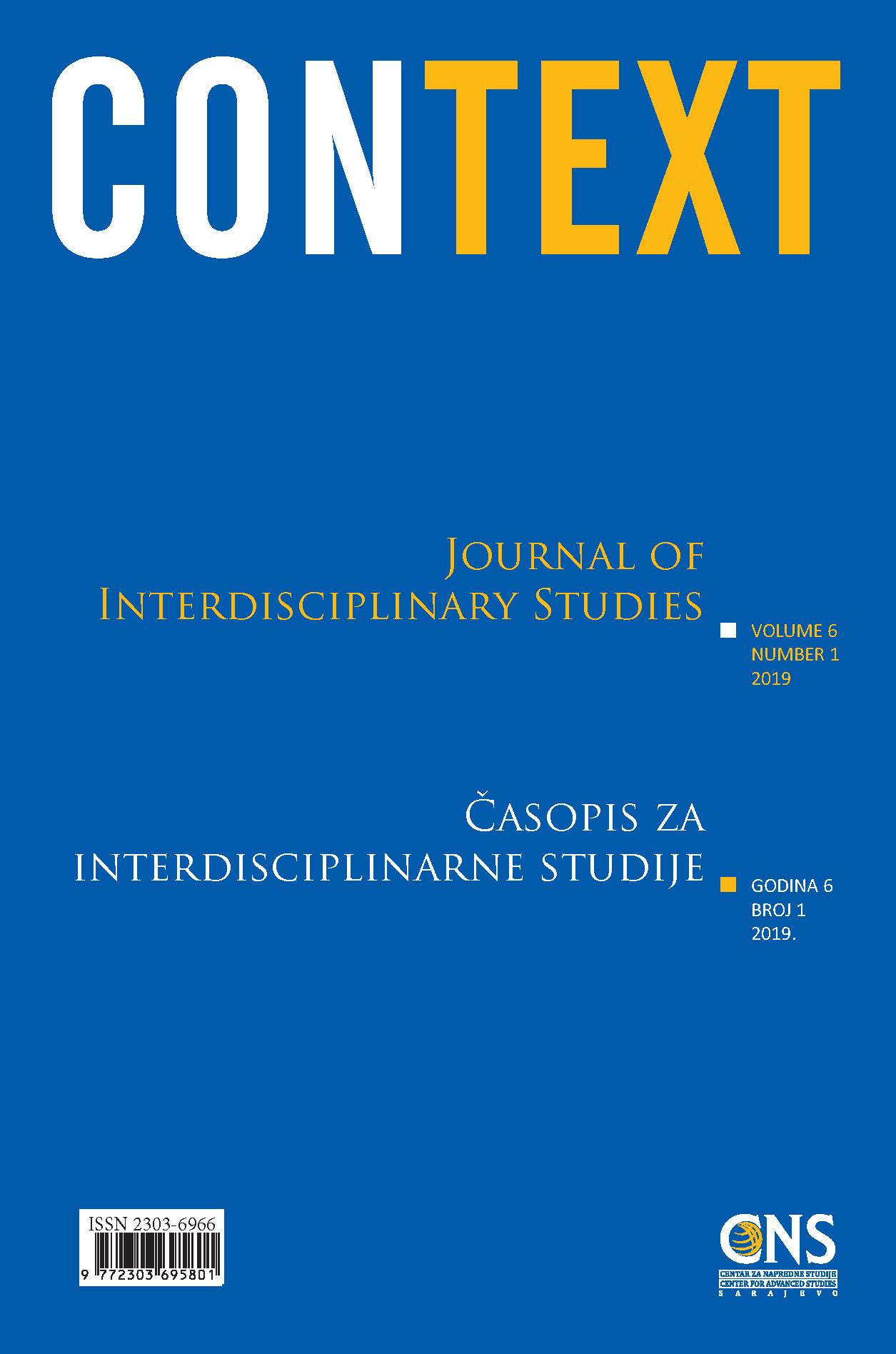
After the communist ideology collapsed at the end of the last century, it began to be replaced gradually in most countries of the former Socialist Bloc by Islamic values. In response, secular communities have developed the concept of ‘traditional’ (good) Islam. The authorities of Russia and Tatarstan have kept up with this global trend. Official religious structures have historically taken the form of spiritual administrations of Muslims (muftiates) in the Russian Federation. They are trying to flesh out the idea of ‘traditional Islam’ at the behest of state authorities by suggesting domestic ‘Islamic traditions’ for each region to be preserved and others to be dispensed with. This article traces the evolution of how the phenomenon of ‘traditional Islam’ has been interpreted from the 1990s to 2018 in the Republic of Tatarstan, using a wide range of sources in Tatar and Russian, including personal interviews by the authors with leaders of the Tatar Muslim community, as well as field research in the districts and cities of the Republic.
More...
Developed countries started to outsource labour-intensive production processes to lower-cost countries decades ago such as the ones belonging to Central Eastern Europe, where subcontracting became significant from the 1950s. During the past few years, tendencies of relocation came to the fore and received a fresh boost because of the economic situation caused by the coronavirus pandemic. The growing need for shorter supply chains creates a noteworthy situation in the region’s fashion industry. But we have to make a difference between the ‘headquarter’ country of the brand and the actual country of origin: even if luxury products are made here, the relations in production remain hidden.
More...

Anna Fournier. Forging Rights in a New Democracy: Ukrainian Students Between Freedom and Justice. U of Pennsylvania P, 2012. Pennsylvania Studies in Human Rights, edited by Bert B. Lockwood, Jr. x, 214 pp. Illustrations. Notes. References. Index.
More...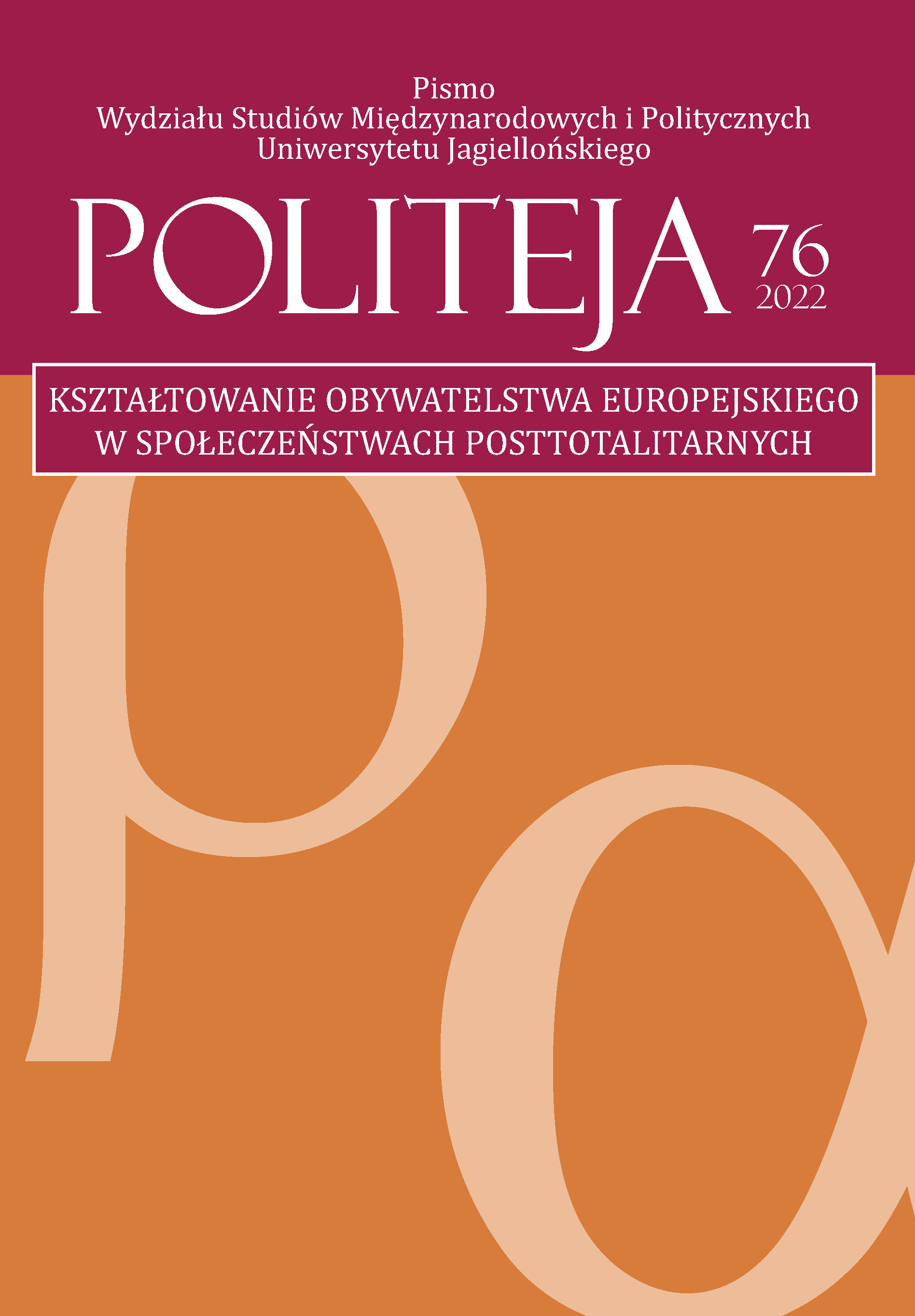
Transition from totalitarian to post-totalitarian type of society requires profound changes not only within institutional frames but also in the mentality of a society. In the case of Russia it is not the matter of coming back to the civil society mechanisms but creating them from anew, as the kind of citizen – state relations had not been spread to the whole society before the Soviet Union times. Intelligentsia could be an agent of the changes towards post-totalitarian state and social order. In this paper questions about the intelligentsia’s status and role in the Russian society were posed. The idea of civil society coined in the times of the Decembrist was confronted with the mobilized type of governing. Intelligentsia, as perceived by the Russian society and experts on the one hand and its selfportrait on the other hand were discussed. An important question concerned the role of the Russian political opposition as the intelligentsia’s ethos continuation. The conclusions were that the intelligentsia repeats the pattern which was first developed at the beginning of the 19th century: its idealistic members are ready to struggle for the common good but without common social support. The status of intelligentsia is perceived as high if about education and morality, but it diminishes when its leadership is concerned. In the Russian post-totalitarian society the state is still an agent to be followed. It takes Russians towards totalitarianism.
More...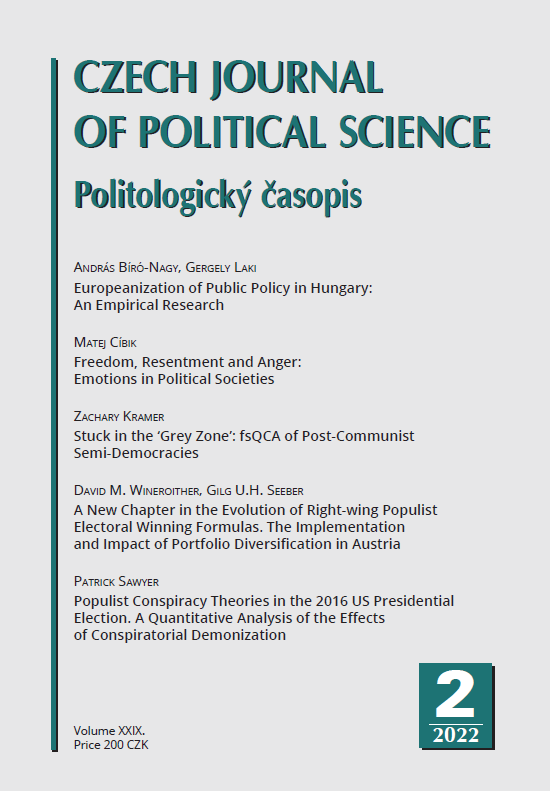
This study investigates the determinants of semi-democracy as a distinct but under-researched outcome among 12 of the 29 European and post-Soviet post-communist states. Institutional theory’s limitations in explaining enduring semi-democracy suggest other approaches may offer new insights, specifically realist international relations theory, given the concentration of unresolved conflicts, asymmetrical trade dependencies on regional powers, and revolutionary overthrows of government among the 12 semi-democracies. The study uses fuzzy-set qualitative comparative analysis, incorporating both established institutional and novel power-relational conditions drawn from realist IR theory, finding that 10 of the cases fit four explanatory patterns, which suggest that institutional conditions do matter for democratization but are intertwined with and subordinated to realist conditions.
More...
2021 saw the thirtieth anniversary of the collapse of the Soviet Union, and there is a growing interest in the historicization of the past 30 years of transformation. Taking this anniversary as a point of departure, we want to look into a specific area that has markedly changed in the last three decades – the scholarly community. The interest of analysing the academia in a period of transformation is not new, and the 1990s are amply covered by the literature scrutinising changes and forging plans for the future development, but we intend to enrich this discussion with approaches coming from the history of science and of scholarship.By looking at changes that happened in the decade following the end of the Socialist utopia, we propose to look into mechanisms of organizational and intellectual innovation and place them in the context of European and global integration. As we argue, looking at the 1990s in Central and Eastern Europe can help us to understand how scholarly systems change by oscillating between tradition and innovation, and we propose the notions of a selective Westernisation and an equally selective traditionalism for our case study.
More...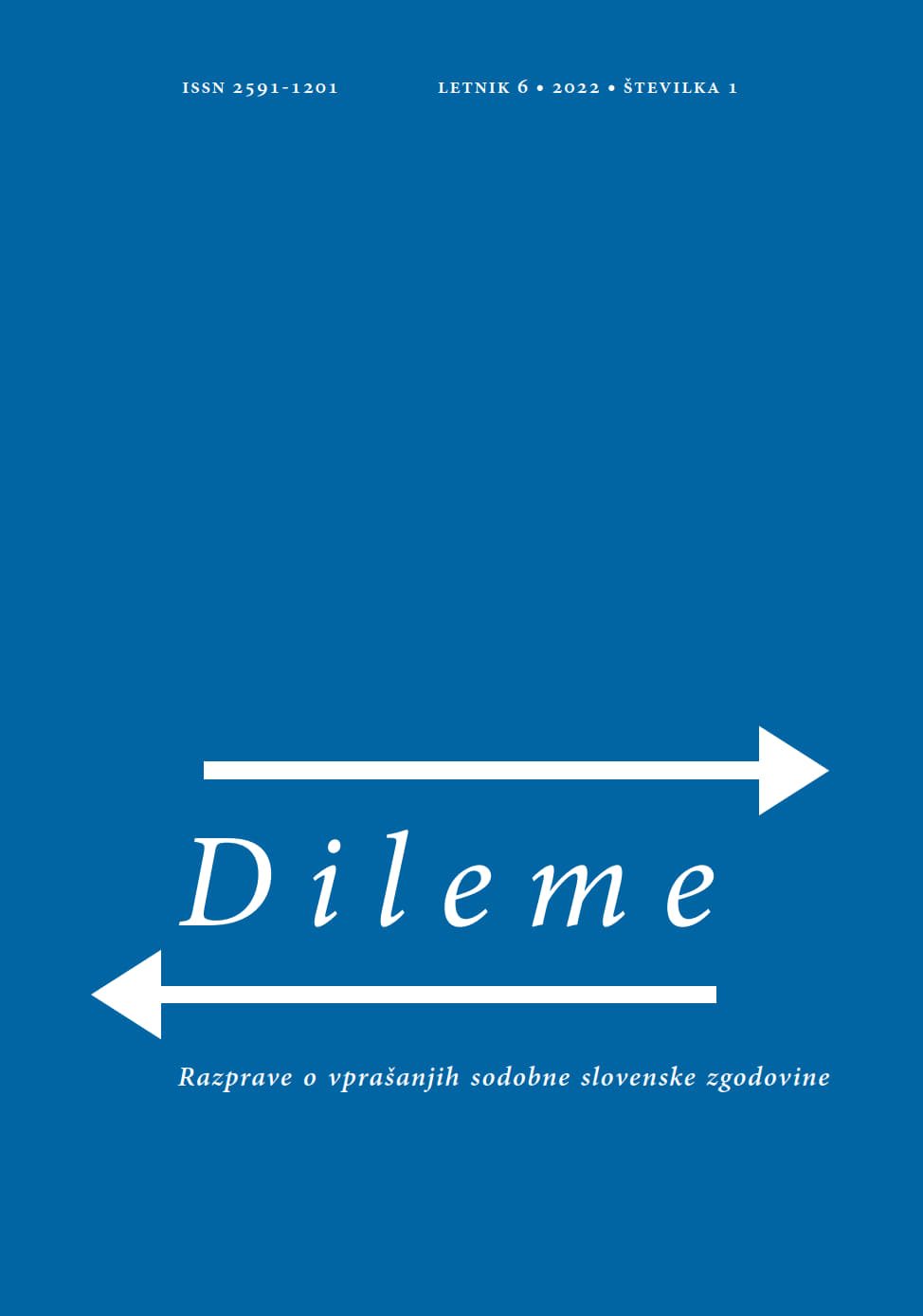
The paper deals with the complicated process of coming to terms with the communist regime in Slovakia. Since the fall of the communism in 1989 the process has attracted the attention of researchers and the public. In many ways, this process is seen to have been unsuccessful –communist crimes remain unpunished and the “drawing of thick lines” prevails. Some representatives of the communist regime have even been honoured with memorial plaques, despite public protests. However, the situation has changed in recent years. Several acts have been adopted to help former political prisoners and to reduce the pensions of communist officials.
More...
Right around the centennial, remembering the birth of the first Czechoslovak Republic, i.e., in 2018 the Czechs were shocked to find themselves in a situation of severe crisis. It is probably not an overstatement that most of the Czechs, not exactly as individuals, but as a nation shared a strong sense of crisis. The political air indeed smelled foul. It was not the crisis of social or economic welfare, or it was not primarily about that. There hang around a fierce sentiment that touched upon their collective existence. However, the collective sense of crisis was not perceived as the same crisis in any certain way. On the contrary, and it was exactly in the core of the crisis, the situation was conceptualized and evaluated in sharply contrasting ways. True, the problem was at the given moment not entirely unique: the sense of being a divided nation had already been spread globally, not in the least in the UK (see Brexit), or the US (see Trump); and no surprise, in the rest of Central-Europe, too.
More...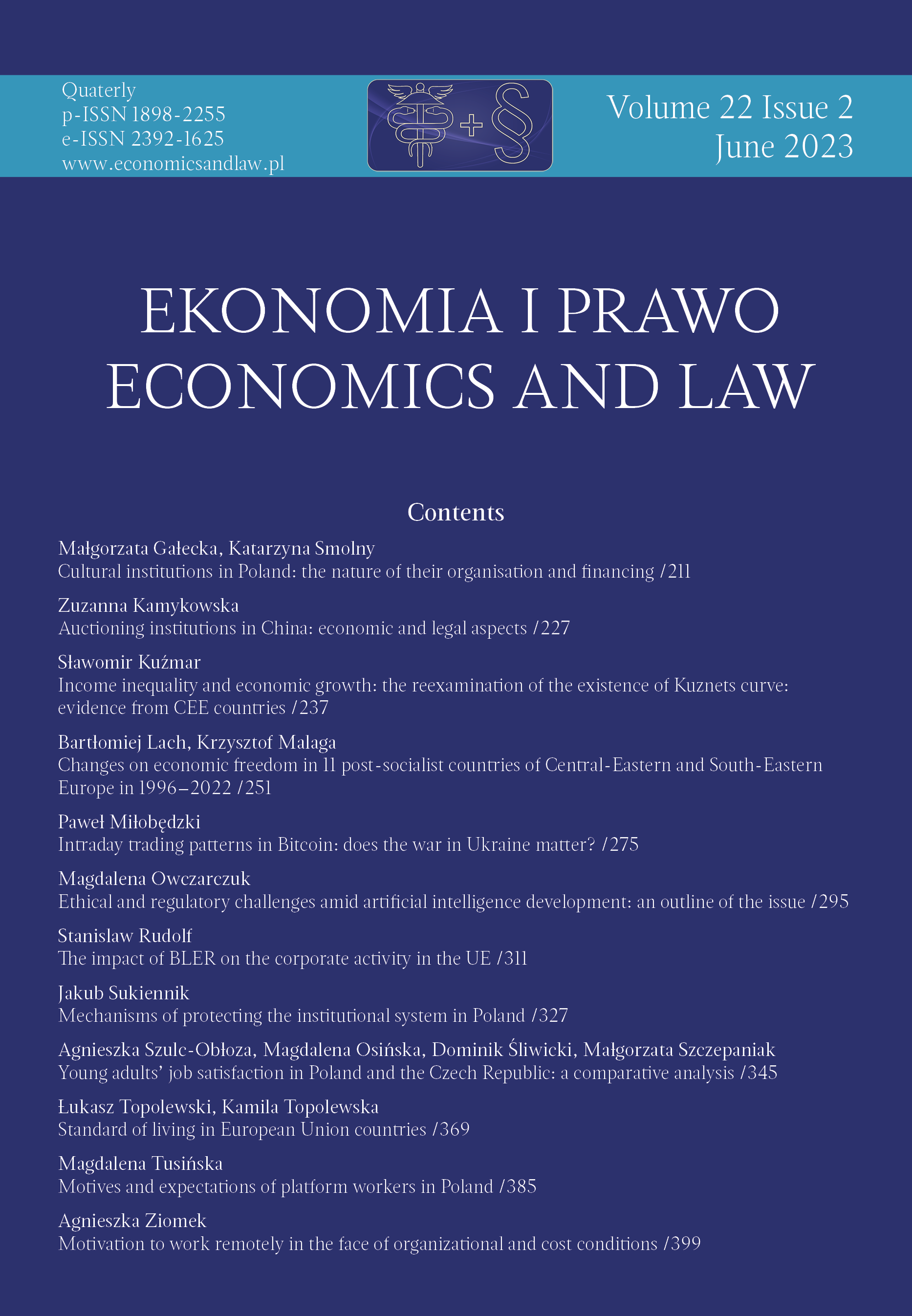
In democratic countries with market economies remains economic freedom. In this context, it is worth assessing the evolution of economic freedom in 11 countries of Central and Eastern Europe and South-Eastern Europe: Bulgaria, Croatia, Czech Republic, Estonia, Hungary, Lithuania, Latvia, Poland, Romania, Slovenia, Slovakia during the period of institutional transformations in 1996–2022. Aim: The aim of the article is to present the results on correlation, s-convergence and s-divergence, as well as a multidimensional comparative analysis in the field of economic freedom. In order to conduct comparative analyzes, the economic freedom indexes published by The Heritage Foundation in Washington and Wall Street Journal will be used. They measure 12 quantitative and qualitative aspects grouped around the four pillars of economic freedom: Rule of Law—property rights, government integrity, judicial effectiveness; Government Size—government spending, tax burden, fiscal health; Efficiency regulators—business freedom, labor freedom, monetary freedom; Open Markets—trade freedom, investment freedom, financial freedom. Results: The obtained results allow us to assess the generally positive changes in economic freedom in its 12 partial and 1 general aspects in relation to each country separately, as well as in relation to the group of countries that joined the European Union after 2003. They are a significant supplement to the knowledge about creating economic freedom in 11 post-socialist countries in the years 1996–2022.
More...
In the article, the author discusses the procedure for appointing the Council of Ministers in Poland after 1989. It examines the period 1989–1992. He begins his deliberations with the appointment of the first non‑ communist government of T. Mazowiecki, and ends with the cabinet of H. Suchocka. The author analyzes the related legal provisions and at the same time describes the political and social context. In the author’s opinion, in all the described cases the political context was important and due to the general nature of the regulations, it was possible to develop optimal solutions. These experiences were the foundation for further work on the constitution.
More...
The democratization of the former Soviet Union countries was a long and arduous process of regaining the sovereignty lost after World War II. The political, social, economic, cultural and institutional transformations taking place at that time, both in the territory of the former Soviet republics and those formally independent of the USSR, but in fact completely dominated by it, constituted a conglomerate of various factors, conditioning in most cases a bloodless revolution. The systemic transformation, however, did not go everywhere in the direction expected by society and the new political class. In many countries, the quality of overall structural transformations left much to be desired. Not everywhere was it possible to fill the institutional void left by the liquidated organs of government and the security apparatus. The lively assessment of the new, democratic political system, formulated in statu nascendi, was shared by the opinion-forming circles that had so far operated in the underground and had a strong influence on the social mood of individual countries. One of the independent magazines devoted to the problems of neighboring countries was the underground periodical “Obóz”.
More...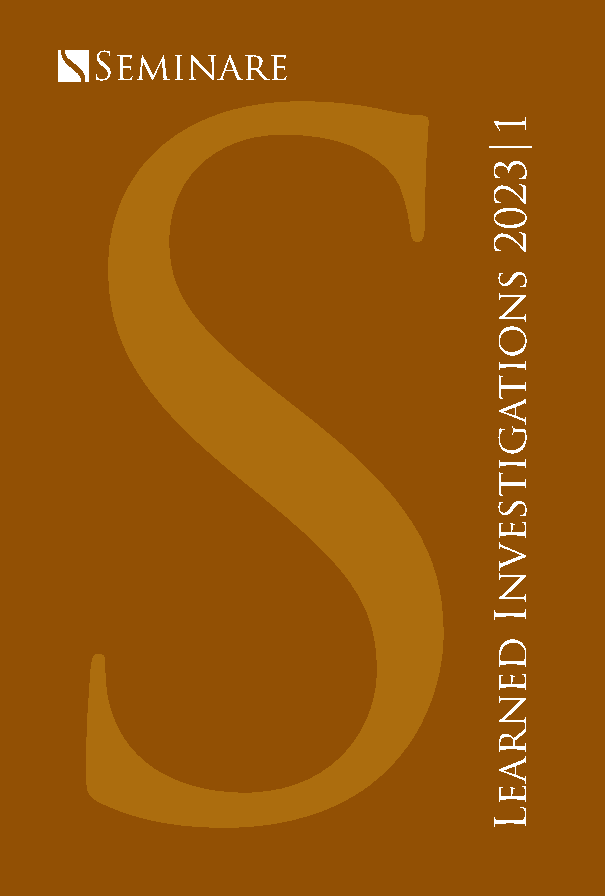
The article describes highly religious young Poles who are at the stage of entering adulthood (aged 18-19 and attending the final grades of high school). In the empirical analysis, we use the existing data from quantitative research carried out in 1996, 2010, and 2021. The same methodology for the implementation of the survey, including sample selection, as well as a broadly comparable research tool, allowing to capture significant changes, tendencies, and trends that have occurred among young Poles in the last 25 years in terms of religiousness.The data show that despite a significant decrease in the percentage of people who define themselves as religious, and even more so as regularly practicing religion, the percentage of deeply religious people and regular religious practitioners remains relatively constant (about 5% of the population of young Poles who have reached the age of majority). The question arises whether the socio-demographic structure of this group remains stable over the time and whether and to what extent it differs from the structure of other groups, including less religious and non- religious people. The article attempts to answer this question.
More...